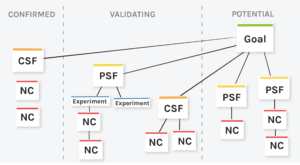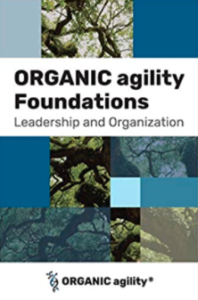Webinar: Human Factors in Agile Transformations
/by Amy BridgeAre we paying attention to the important human factors of coherence, psychological safety, and trust that connect us in the virtual and physical spaces where we gather? In July, agile42 coach Michèle Twomey, alongside our special guest Sonja Blignaut from More Beyond, explored this question and some of the hybrid models we are testing that enable essential human contact during agile transitions.
Michéle kicked off our two-part series on "Human Factors in Agile Transformations". In her video interview, Michéle gave us her take on Gerald M. Weinberg's statement: “all problems are people problems”. She also delved into what human factors one needs to consider in agile transformations as well as her sources of inspiration in her own journey of understanding human factors.
Let's automate what needs to be automated and let's start thinking about where that human magic can really become valuable.
- Michéle Twomey
Next up, Sonja shared her insights on human factors within the realm of "complexity". She addressed the notion that, if we force too much change on people, we compromise their sense of coherence. Ultimately she believes we need to think about limiting the change in progress, the same way we limit work in progress within agile transformations. Listen to Sonja's video interview HERE.
Michéle and Sonja joined forces in our webinar on the 28th of July. The session raised many pressing issues we are currently facing, particularly around the expectation of always being available, always being online, and the important element of trust within the workplace. The audience had the opportunity to engage with their own questions, some of which included:
- Given a new team who can only work remotely, what would you suggest to build trust?
- I miss the spontaneous corridor discussions that have in the past been the space where the most impact has been made. Have you seen anything that could substitute this space in the current situation when we're all remote?
- What do you think helps some people handle digitisation better than others?
- How is the link between the personality type of the leaders vs the human factor taken into consideration or not?
In the same way you put in place WIP limits, you need to put in change in progress limits. It's like a dam with sleuths - if you don't think carefully about how much water you let out, you flood the downstream.
- Sonja Blignaut
If you missed out on the live session, we have the recording for you here - please feel free to share around with your network.
Join our free agile42 Community and gain access to thousands of agilists from all over the world to share experiences, challenges, and ideas. A safe and moderated community of like-minded people, who share a passion for all things agile - organizational culture, lean and agile methods, coaching & more!
Please do get in touch with us should you have any questions - we would love to hear from you.
Follow us on our social media platforms:






